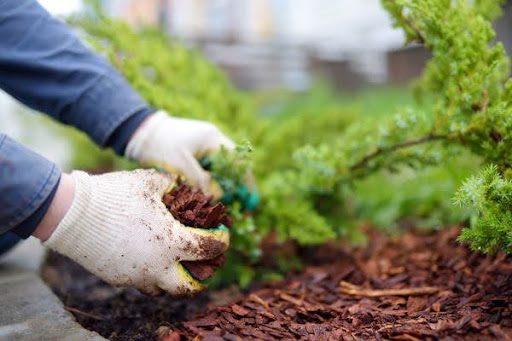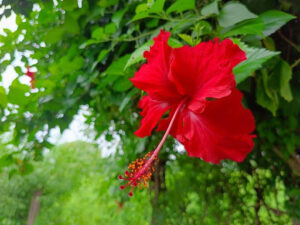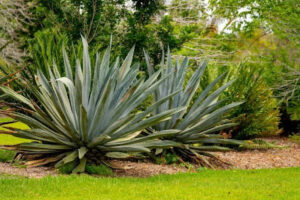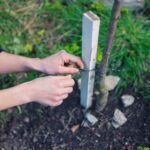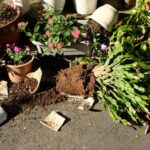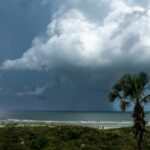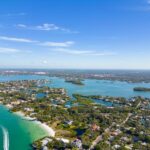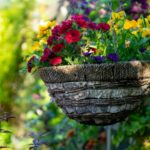Creating a beautiful and sustainable landscape in Florida starts with the first principle of Florida-Friendly Landscaping™ (FFL): choosing the right plant for the right place. This foundational step ensures your garden thrives with minimal maintenance, conserves water, and supports the local ecosystem. Let’s dive into how you can apply this principle in your Sarasota garden.
Understanding Your Garden’s Conditions
Before selecting plants, it’s crucial to assess the unique characteristics of your yard. Florida’s climate and soil are unlike any other, so understanding these factors can save you time, money, and effort.
1. Soil Type
- Common Types in Sarasota: Most Sarasota gardens feature sandy, well-draining soil, which doesn’t hold nutrients well. Some areas may also have alkaline soil.
- Testing Your Soil: Conduct a simple soil test to determine pH and texture. This information will guide your plant selection.
- Suggested Plants: For sandy soils, consider drought-tolerant natives like coontie (Zamia integrifolia) or saw palmetto (Serenoa repens)
2. Sunlight Exposure
- Sun Patterns: Take note of how much sunlight each part of your garden receives throughout the day. Options include:
- Full Sun: Areas that get 6+ hours of direct sunlight.
- Partial Shade: 3-6 hours of sunlight, often in the morning or late afternoon.
- Full Shade: Less than 3 hours of sunlight daily.
- Sun-Loving Examples: Try blanket flower (Gaillardia pulchella) for full-sun areas or dwarf firebush (Hamelia patens var. compacta) for partially shaded spots
.
3. Moisture Levels
- Dry vs. Wet Areas: Identify zones that retain water after rain and those that dry out quickly.
- Plant Recommendations: Use drought-tolerant species like muhly grass (Muhlenbergia capillaris) in dry areas and moisture-loving options like swamp milkweed (Asclepias incarnata) in wetter spots.
Choosing Plants Based on Local Conditions
Selecting plants suited to Florida’s climate means opting for native or well-adapted species that thrive with minimal input.
Native vs. Adapted Plants
- Florida Natives: Native plants are best because they’ve evolved to handle local pests, diseases, and climate. Examples include beautyberry (Callicarpa americana) and silver buttonwood (Conocarpus erectus)
. - Adapted Options: These non-native plants perform well under Florida conditions without disrupting the local ecosystem, such as hibiscus or crepe myrtle.
Plant Hardiness Zones
- Sarasota is primarily in USDA Hardiness Zone 9b-10a, where winters are mild, and frosts are rare. Use this zone to choose appropriate plants that can withstand occasional cold spells.
Designing for Microclimates
Microclimates are areas within your garden that have slightly different conditions due to factors like shade from a tree or warmth from a nearby wall.
How to Identify Microclimates
- Examples: A sunny, wind-protected patio will have a different microclimate than a shaded, breezy area under a live oak.
- Design Tips: Use plants like ferns or caladiums for shade gardens and bougainvillea or lantana for sunny, exposed spots
Grouping Plants by Water and Maintenance Needs
Efficient water use is crucial in Florida, where droughts and heavy rains can both be challenges.
Hydrozoning
- Definition: Group plants with similar water needs to simplify irrigation.
- Practical Setup: Keep succulents like agave together in a dry zone and place thirstier plants, such as canal lilies, in a wetter area
.
Reducing Maintenance
- Choosing the right plants for the right spots means less need for pruning, fertilizing, and pest control. Native groundcovers, like sunshine mimosa (Mimosa strigillosa), help suppress weeds and reduce the need for mulch
.
Practical Examples for Sarasota Gardens
Example 1: Full Sun, Sandy Soil
- Plants: Coastal rosemary (Westringia fruticosa), Spanish bayonet (Yucca aloifolia), sea lavender (Heliotropium gnaphalodes).
- Why These Work: They are highly drought-tolerant and thrive in the harsh Florida sun
Example 2: Shaded, Moist Area
- Plants: Blue flag iris (Iris virginica), wild coffee (Psychotria nervosa), swamp fern (Blechnum serrulatum).
- Why These Work: These species handle low-light conditions and wet soil well, making them ideal for Florida’s natural landscapes
Conclusion
By following the principle of “Right Plant, Right Place,” you’re setting your Sarasota garden up for success. You’ll save water, reduce the need for chemicals, and enjoy a lush, vibrant landscape that enhances Florida’s natural beauty. For expert advice, a wide selection of Florida-friendly plants, and landscaping resources, visit Troy’s Tropics. Don’t miss our seasonal workshops to learn more about sustainable gardening techniques!

